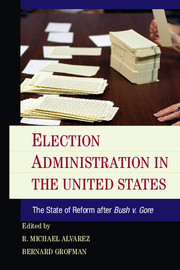References
Published online by Cambridge University Press: 05 October 2014
- Type
- Chapter
- Information
- Election Administration in the United StatesThe State of Reform after Bush v. Gore, pp. 223 - 238Publisher: Cambridge University PressPrint publication year: 2014

